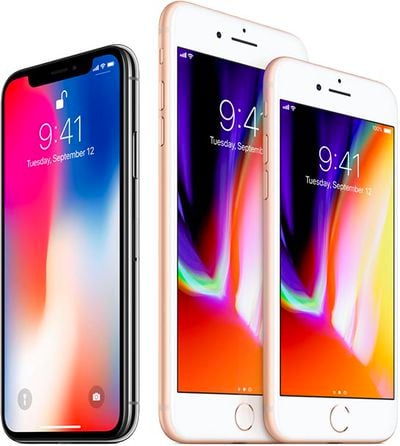Japan Display is planning to raise $517 million through third-party share allocations and asset sales so it will have the funds to supply LCD screens for new iPhones, reports Nikkei.
Last year, Japan Display lost business because of Apple's shift to OLED, so the company sought partnerships to begin producing OLED displays, but with Apple planning to continue to use LCDs for some devices, Japan Display is in need of working capital to purchase inventory and to begin production on the LCDs Apple now needs.

Rumors have suggested Apple is planning on introducing two OLED iPhones (5.8 and 6.5 inches) and one 6.1-inch LCD iPhone next year, with the LCD device to be positioned as a low-cost option alongside the two more expensive OLED devices.
With Japan Display again planning to invest in LCDs, it could be in trouble in the future should Apple opt to abandon LCD technology for OLED technology entirely, says Nikkei.
Expecting the U.S. tech company to keep shifting toward OLEDs, the supplier began exploring capital partnerships to obtain the massive funds necessary to invest in producing the advanced tech.
However, the iPhone X has proven a flop, and Apple appears to be sticking with LCDs for some models due out this fall, leaving Japan Display in need of working capital to secure inventory and production capacity to supply those screens.
Previous rumors have suggested Apple is interested in Japan Display's Full Active LCDs, which are said to match or exceed some of the advantages of OLED at a lower cost.
Full Active panels have a smaller bezel around the screen than traditional LCDs and they have enough flex that they can be used in curved or angled designs.
All three of Apple's rumored 2018 iPhones are expected to adopt full-screen designs with minimal bezels, much like the iPhone X. The Home button will be eliminated in each, with Apple adopting Face ID across its 2018 iPhone lineup.






















Top Rated Comments
Lol what?
I had an X and I don’t think Apple got the best OLED displays Samsung is capable of making. I don’t know if it was Apple’s specifications at fault or something Samsung did, but the pwm flicker did my eyes in. And I saw some ugly variances in display color temperature and quality among different X’s. Owning the refined S9+, I know OLED quality doesn’t have to be that varied anymore. Every S9+ I’ve seen so far has been uniformly excellent and without the weird flaws I noticed when the S8’s were first released. Nor does OLED have to cause migraines and eye strain.
I don’t plan to get one, but I do hope the next generation of IPhones get some spectacular displays that truly show off the best that their respective technologies are capable of.
And even though I personally didn’t get along with it, nor the cost, I find it hard to believe the X flopped. I think people are just holding onto their phones longer. A lot of people I talked to don’t want to give up their 6 and 6s models because it means giving up the headphone jack. Those are excellent phones and with new batteries in them, many owners I chatted with seem quite happy.
But then again I’m glad that it flopped, hopefully forcing Apple to bring that ridiculous price down again!!!
On November 2, 2017, Apple provided guidance for FY18Q1 (Oct-Dec 2017) of between $84-87 billion. They announced this past February that they beat that estimate, posting record sales of $88.3 billion.
That doesn’t sound like a company that is incapable of estimating their demand and needs to scale back orders. That’s a company that nailed their sales projections and knows exactly how many displays they need.
There’s always a production cut in the second quarter, since sales are much, much higher in the Oct-Dec quarter vs the Jan-Mar quarter. That’s true every year, and is well known. Completely expected; iPhone sales are highly seasonal. In FY2017 for example, Apple’s FY1Q iPhone revenue dropped from $54 billion to $33 billion in FY2Q.
So what’s important is the magnitude of the production cuts. It could very well be that they’re lower than last year, i.e. X sales might actually be holding up better than did iPhone 7 sales.
In February, Apple guided for $60-62 billion for their Q2 (Jan-Mar) revenue. This is 13-17% higher than the year ago quarter of $53 billion, which in no way supports the Nikkei narrative of an iPhone X “flop”. (The record $88.3 billion Q1 revenue was 13% higher than the same quarter revenue last year, $78.3 billion.)
Tl;dr: No unanticipated production cuts, both last quarter’s 13% revenue increase and this quarter’s projected 13-17% revenue increase clearly indicate Apple is expert at predicting their demand. And disproves any “flop” narrative.